- Home
- Jackie French
Let the Land Speak Page 2
Let the Land Speak Read online
Page 2
The land will determine our future, too.
Understanding the land can be as simple as digging a thirty-centimetre hole in the soil to see if the ground you plan to live on is subject to flood, or fire. It can be as profound as realising how the age-old myth of ‘endless land’ still shapes the policies of our major political parties.
We need to listen to our land. If we fail, we will stumble into a future we can neither predict nor understand.
CHAPTER 1
The real First Fleet
A story from 60,000 years ago
They came by boat1, a fleet of small canoes on a large grey ocean, the sky above them pulsing red as the volcano they had fled flared. The air was dark with ash, so black it was impossible to see more than a metre ahead.
They were frightened, not adventurers. They came because their former land had said, ‘Leave, or your children die’. Three of them huddled in the first canoe, grim-faced but resolute: a man, naked except for the plaited belt around his waist that held his stone knife and spare fishhooks in place, and a tall woman with a child in her arms. The woman wore necklaces of shells and seeds. Jewellery can’t save your life, but it weighs little. When your life has been ripped apart, a necklace declares your pride.
They navigated only by the position of the sun, a vague brightness in that blood-dark sky. Behind them lay devastation. Monster waves had swept across their camp in darkness after the volcano’s first massive shudder. Now ash lay metres deep on the forest where they had once hunted and dug yams. When the tall woman found a canoe wedged up in a tree where the waves had left it, she had been seized with a certainty. They must leave now, before their children died.
Somewhere beyond the thin line of the horizon they might find refuge. The aunties had taught her to look for the land birds that flew from the southeast after each season of fruit. Each dry season she’d seen smoke from there, too. Birds and fire need land.
Now humans needed that land, too.
The woman had tried to convince the whole clan to leave. Some shook their heads; there are always those who think that when they wake up tomorrow the world will be like it was yesterday. But the young men had scavenged more canoes, plastering them with tree sap to mend the damage. The women filled dried sow bladders with water and filleted fish stranded by the tsunami into thin strips to dry in the sun for the voyage. The tall woman had pushed aside the ash to dig out yams; not to eat, but to plant when they reached safety. What if the new land had no yams, like some of the small sand islands? The sea gave fish and turtle, but people need yams and fruit. She touched her necklace made of last year’s fruit seeds. She hoped they’d grow.
They launched the tiny fleet into the debris-laced sea at first light, carefully distributing their water gourds, stone axes and bundles of yams to keep the canoes steady. The men paddled southeast, towards the ash-dimmed sun and the unknown. The current pulled the canoe forward, a strange new current, forged perhaps by the tsunami. It seemed to be urging them along.
There was no moon that night, no avenue of stars in that strangely dark sky to point the way. At times they called out to each other, to keep the fleet together, to say to the darkness: we are still alive. When the grey smudge that was the sun rose through the ash they saw they had drifted off course. One of the canoes had vanished. They yelled again into the grey air. It might be day; there was no real light. But all they heard was the slapping of the waves. Had the lost canoe overturned or been attacked by crocodile or shark? There was no way to search for them now. The paddlers turned to face south now, the dim sun on their left.
The ash gradually cleared around them as they paddled south. The sunlight grew hotter. Their skin burnt under the coat of ash. The woman’s daughter whimpered for water. The woman dipped her finger into one of the bladders and wet the child’s lips. The water must be kept to keep the paddlers going. The woman herself stayed thirsty, her lips cracked from sun and salt.
She tried to peer through the brightness of sun and sea. Was there really land ahead? Perhaps she had seen clouds, not smoke. Perhaps the birds had chosen a strange seaward path for some reason of their own.
If there was no land to the south then everyone in their fleet would die. It would take days to paddle back against the current, and to what? Death in the ash? If the new land had no fresh water then they would die too. Birds could fly over reefs that would shred a canoe. If the land in front of them was fringed with reefs, they might die in the wreck of the canoes.
If there was land at all.
She looked down at the sea. A piece of mangrove wood bobbed against the canoe. It might be a sign of land. It might also have been dragged from the land they’d left by the monster wave.
The child cried again. She held her to her breast. There was nothing to drink there either, but the child quietened, comforted.
Her husband slumped. He had paddled all yesterday, and last night too, keeping their canoe steady. His paddle drifted from his hand. The woman leant out of the canoe and grabbed it. The canoe lurched, swamping them with water. She bailed out what she could, swiftly, with cupped hands. The child copied her. The woman began to paddle. Men paddle faster, stronger, but women can endure longer than men. Women will keep going to save their children.
The woman kept on paddling.
The sky pulsed red, reflecting the eruption behind them. The woman navigated almost by instinct now, keeping at the same angle to the wind. The rest of the fleet followed her lead.
If she was going the wrong way then they would all die. Perhaps they would all die no matter what she did.
The child gave a cry. A smudge darkened the far horizon. It was a cloud, only a cloud. She looked again. Not clouds. Two small islands, and one so big it was impossible to see where the coast ended. She would have cried in triumph if she’d had the breath to waste.
The land grew closer, and closer still. The child’s father forced his body up and took the paddle from the woman. She opened one of the water bladders, holding it to the child’s lips and then to the man’s before she drank herself. They needed water now to keep on going. If this new land didn’t have fresh water, a bladder’s worth of water wouldn’t save their lives.
The grey smudge became blue, then green. She could see hills. Another small knife of terror dropped away. High ground meant water – probably. Trees meant forest, food.
She and her partner took it in turns to paddle now. Green became mangrove swamps. Mangrove swamps meant bats to hunt and roast, mangrove worms and mussels, and a sandy bottom that wouldn’t rip the canoe apart.
The blue sea grew threads of surf. The fleet’s men wielded the paddles, using the last of their strength to arrow the canoes across the waves. A surge of sea lifted the tall woman’s canoe up. The spray stung her face as the canoe spun along the wave, closer and closer to a small white beach. The sea retreated, leaving the canoe on the sand.
Another wave might drag them back. The woman grabbed the child in one arm, balanced the bark-wrapped yams and seeds on her head and staggered ashore while her husband secured the canoe. One step, another and another. She looked down at the prints in the white sand. Human footprints, the first this land had known.
She managed a smile. Putting the child down, the woman touched her belly where a new life grew. She would become the mother of a continent of people.
The long route to Australia
Is this what happened 60,000 years or more ago? Perhaps. Northern Australia – or Sahul, the name now given to the continent that incorporated mainland Australia with Papua New Guinea as well as Tasmania and our outer islands – may have then provided refuge for small canoes from the north. Tens of thousands of years later the winds, cliffs and reefs of the west, south and east would keep the larger ships of travellers from further afield away.
Australia was probably first settled about 60,000 years ago at a time of geological upheaval in what is now Indonesia and Timor.2 The first settlers may well have fled from the eruptions. I’ve seen a sky pulse
red like that, with air too thick with ash to see, though that was from a bushfire, not a volcano. Ash means starvation unless food can be brought from somewhere else.
Humans walked out of Africa over 100,000 years ago.3 During the following 40,000 years the ancestors of Australia’s first settlers probably followed the coasts of Southeast Asia, with a long halt in what is now called Taiwan. They then paddled their canoes from island to island, reef to reef, via the Philippines, abandoning each landfall when food became scarce, or curiosity drew them on.4
The people on our ‘first fleet’ came from a long tradition of crossing seas in small craft.5 Sixty thousand years ago the sea level was far lower than it is now, with much of the world’s water frozen into ice sheets and glaciers. But even with lowered sea levels there were many areas where boats were necessary as it was too far to swim. The ancestors of Australia’s first settlers had to cross at least sixty-five kilometres of treacherous sea beyond sight of land, with either the knowledge that they could navigate their way back again, or the bravado – or desperation – to keep going.
The men and women who took that bold step made the longest journey from humanity’s original homeland in Africa.
Refugees or adventurers? (And the absent elephants)
Were the people in those canoes refugees? It’s likely. Adventurers come by themselves, two or three young men together. The migration of enough humans to make a viable population suggests more than a few canoes blown off course.
Nor could the ancestors of our first nations have been washed here on floating logs. If humans could have floated here then so could monkeys and other apes, which would have flourished in the rainforests of northern Australasia. If humans and other animals could have walked or swum here so could elephants, which the Indonesian island of Flores had until about 10,000 years ago.
The place where that first foot came ashore is now probably under water. Was it a woman’s foot? That’s likely, too. If a man was paddling he’d let the women and children scramble out in the shallows before he hauled the heavy canoe up the beach.
Different Aboriginal nations have different arrival stories. The Gagudju people of the Alligator River area in the Northern Territory tell of their ancestress Imberombera, the Great Mother, who came from across the sea. Her womb was full of children and she carried woven bags on her head filled with yams and seeds and plants. The Gunwinggu people tell of their ancestress Waramurungundju, who also came over the seas in a canoe from the northwest. There is no one story (or suite of stories) that represents all Indigenous beliefs.
The DNA divergence
There were probably several refugee groups6, over several years, 1000 to 3000 people, building up to a population of about 20,000 by 22,000 years ago, then crashing to less than half that as the Ice Age bit between 21,000–18,000 BC.
The genome of most humans shows a great deal of mixing in the past 60,000 years, not just with different groups of humans but with Neanderthals, Denisovans and probably other hominins still to be discovered. But the genome of Indigenous Australians illustrates the relative isolation of the Indigenous Australian gene pool from their arrival around 60,000 years ago until 1788.
DNA sequencing of a hundred-year-old sample of a West Australian Aboriginal man’s hair shows he was directly descended from a migration out of Africa into Asia that took place about 70,000 years ago. The man’s genome reveals that his ancestors separated from the ancestors of other human populations 64,000 to 75,000 years ago, when the ancestors of Asians and Europeans had not yet differentiated from each other and were still in Africa or the Middle East. His closest DNA match today is with people in the Papua New Guinea Highlands and the Aeta people of the Philippines.
This doesn’t mean that Australia was totally genetically isolated. DNA patterns also suggest a link with the people presently on the Indian subcontinent dating from about 4000 years ago, which – coincidentally or not – is about the time the dingo arrived here, and various Indigenous languages changed along with tool-making methods.7 This is also the time when vast trade routes were established through the Middle East and Asia as coastlines stabilised and climates changed, often growing dryer after the melting of the ice. It would not be surprising if trade routes down through Southeast Asia with links to Australia began during this period as well. As the Indigenous genome is studied in more depth, other links may be found. It’s likely, though, that there was far less genetic mixing in Australia than in areas like mainland Europe and Asia.
Our eagerly breeding ancestors
In most of the world, through Europe, Asia, the Middle East, Africa and Polynesia, human populations moved both far and often. Genes were exchanged in marriage, rape, commercial transaction, or a bit of slap and tickle in the corn fields, wherever traders or invaders passed. Once horses were domesticated, about four thousand years ago, large amounts of goods could be transported thousands of kilometres. In the past ten years, satellite images have allowed the discovery of vast ancient trade routes across what are now deserts in the Middle East, going back perhaps five thousand years. The Silk Road connected ancient China to ancient Rome at least two thousand years ago, and probably for centuries or even thousands of years before that. Ships, too, would trade heavy goods, from tin to bales of wool.
But in Australia, although there were long trade routes right across Australia and up into Asia, trade was limited to what a person could easily carry, rather than the trade ships that sailed the Mediterranean three thousand years ago or the caravans of laden horses, camels, donkeys, alpacas, mules, oxen, reindeer or even hand-pulled sleds of much of the rest of the populated world. So the gene pool in Australia was predominantly made up of the descendants of those who survived and thrived in the extremes and changing climate of this land, with relatively few additions from traders or migrants.
A hard beach to land on
Why did so few come here over those tens of thousands of years? While Australia has few great harbours to shelter large sailing ships, it does have long beaches where it’s easy to land small boats or canoes. This is, after all, a good part of the world to live in. People in small boats still regularly attempt to arrive here. Holiday-makers pay money to visit. In every survey asking people for their idea of ‘a nice place to live’, no matter what the criteria, some part of Australia usually makes it into the top five, or at least the top ten. As we’ll see in chapter 5, Australia’s northern neighbours, as well as some across the world, knew that land was here, quite apart from the mythical terra Australis. Why did so many invaders compete for the damp forests of England and so few choose sunbaking and fishing in Australia?
One answer is that, in fact, for much of the 60,000 years Australia was inhabited, England (and a large part of the rest of frozen Europe and the United States) wasn’t.8 The first human colonies in what is now England either left or died out in the Ice Age. But England is only about thirty-four kilometres from mainland Europe, so close that in World War 1 people in the south of England could hear the sounds of war in France. As the world warmed about 15,000 years ago, the crossing from mainland Europe to England could have been done in a day in a small round leather boat, if the wind was coming from the right direction. England was a relatively easy place to both colonise and invade, and the highly diverse genome of those in the United Kingdom today reflects that.
In comparison, the sixty-five kilometres or more to Australia was a canoe trip into the unknown. It wasn’t until sometime around the 1700s when the Macassan fishermen of what is now Indonesia had developed more efficient sails that the crossing became fast enough for them to sail to Australia safely, dive for trepang and then sail home.
The sea, the ferocious gale winds of the south and west, the teeth of coral reefs as well as distance all combined to keep Australia isolated for thousands of years.
Old soil versus new, deer versus wallaby
But even those who visited here from the nearest populations to the northwest might not have been tempted to colonise. The soils ar
ound the volcanoes to the northwest of Australia are fertile, easy land to farm and grow crops like rice or bananas. Volcanos may be deadly when they erupt, but there is a good reason why so many have farms or cities at their feet. To anyone used to rich volcanic soil, or bare fertile soils left by the retreating glaciers or the rich flood plains of Europe and North America, Australian soils look uninviting. The areas here with the richest soil were also likely to be heavily forested, not kept clear of trees by regularly flooding rivers or glaciers and vast herds of grazing animals that would eat tree seedlings as well as grass. Deer and goats can form herds of hundreds or even thousands; kangaroo mobs are usually limited to about thirty, and eat only grass. Australia’s main ‘young-tree eaters’ are wallabies, who don’t form mobs or create or maintain vast grasslands.
It’s worth noting that even after the trepang fishermen made their voyages here from 1700 onwards, no large migration of people from the northwest followed. Local opposition may have been a deterrent, but the cultures to the north of us were extremely good at fighting for territory. This territory wasn’t worth it.
The barrier of the reef
Australia also seems to have missed out on the great Polynesian colonisation.9 By about 1300 Polynesian colonisation had spread from Hawaii to New Zealand, even to Easter Island, colonising previously unsettled islands in their massive double hulled canoes, with extraordinary navigational skill, and able to journey even against the prevailing winds and currents. They may even have traded with South America – a possible though controversial explanation for the presence of Auracana hens in South America long before Europeans could bring poultry.
Australia could have been settled in those migrations, too. But the Polynesian migrants would have most likely come from the northeast. Much of our northeastern coast is guarded by an extraordinary long and relatively unbroken series of coral reefs. Unless you are a sailor, the name chosen for our World Heritage reef may not mean much. But to anyone in a seagoing vessel, ‘great barrier’ means exactly that: razor rocks, often hidden under waves, that will sink ships and drown sailors who try to pass them.

 Christmas Lilies
Christmas Lilies The Lily in the Snow
The Lily in the Snow The Schoolmaster's Daughter
The Schoolmaster's Daughter Christmas in Paris
Christmas in Paris Lilies, Lies and Love
Lilies, Lies and Love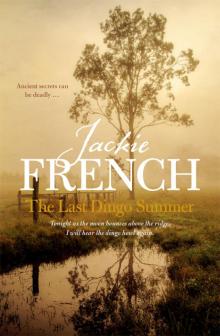 The Last Dingo Summer
The Last Dingo Summer Legends of the Lost Lilies
Legends of the Lost Lilies Just a Girl
Just a Girl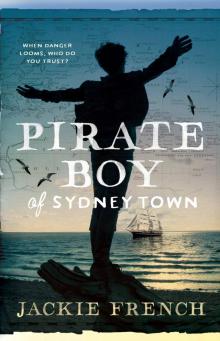 Pirate Boy of Sydney Town
Pirate Boy of Sydney Town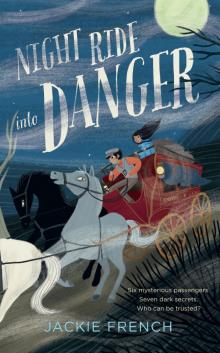 Night Ride into Danger
Night Ride into Danger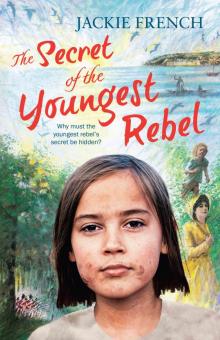 The Secret of the Youngest Rebel
The Secret of the Youngest Rebel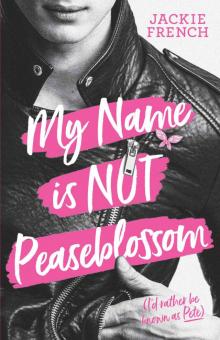 My Name is Not Peaseblossom
My Name is Not Peaseblossom Goodbye, Mr Hitler
Goodbye, Mr Hitler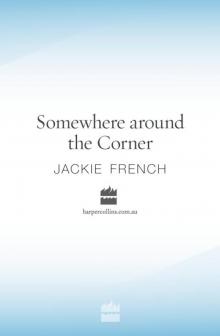 Somewhere around the Corner
Somewhere around the Corner Dingo: The Dog Who Conquered a Continent
Dingo: The Dog Who Conquered a Continent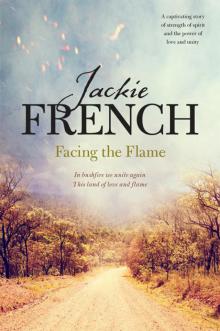 Facing the Flame
Facing the Flame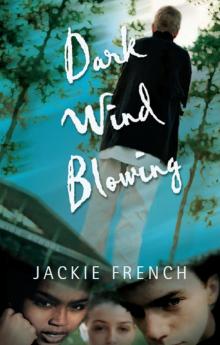 Dark Wind Blowing
Dark Wind Blowing Pennies For Hitler
Pennies For Hitler They Came On Viking Ships
They Came On Viking Ships To Love a Sunburnt Country
To Love a Sunburnt Country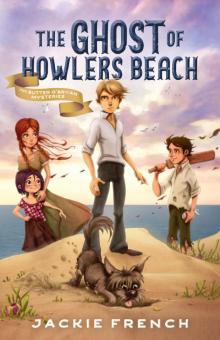 The Ghost of Howlers Beach
The Ghost of Howlers Beach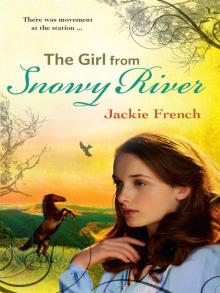 The Girl from Snowy River
The Girl from Snowy River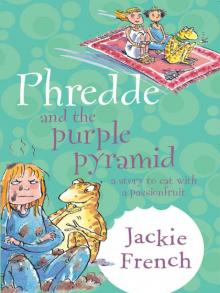 Phredde and the Purple Pyramid
Phredde and the Purple Pyramid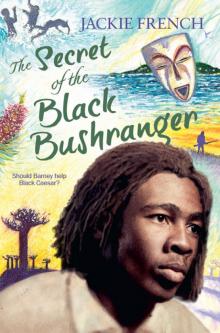 The Secret of the Black Bushranger
The Secret of the Black Bushranger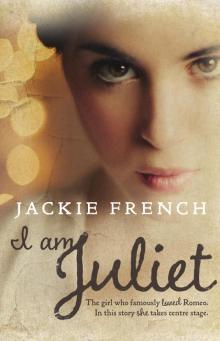 I Am Juliet
I Am Juliet Barney and the Secret of the French Spies
Barney and the Secret of the French Spies Miss Lily’s Lovely Ladies
Miss Lily’s Lovely Ladies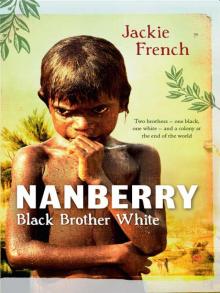 Nanberry
Nanberry A Waltz for Matilda
A Waltz for Matilda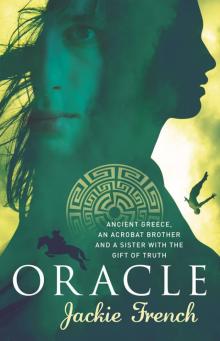 Oracle
Oracle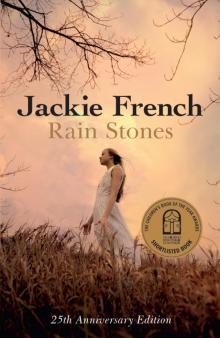 Rain Stones 25th Anniversary Edition
Rain Stones 25th Anniversary Edition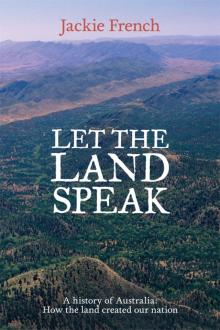 Let the Land Speak
Let the Land Speak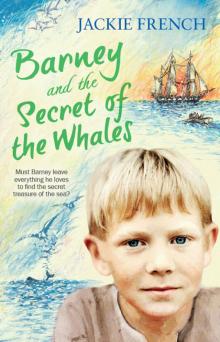 Barney and the Secret of the Whales
Barney and the Secret of the Whales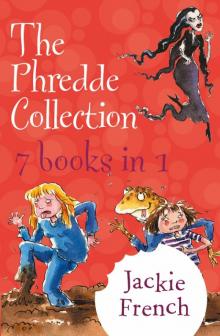 The Phredde Collection
The Phredde Collection Year in the Valley
Year in the Valley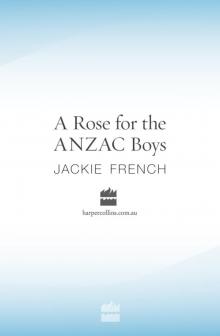 A Rose for the Anzac Boys
A Rose for the Anzac Boys The Ghost by the Billabong
The Ghost by the Billabong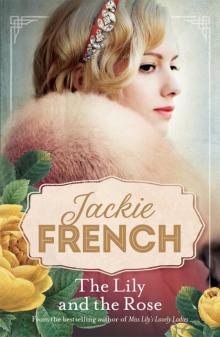 The Lily and the Rose
The Lily and the Rose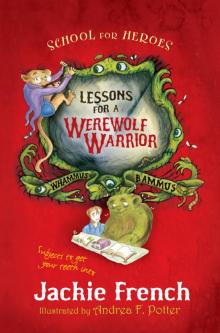 Lessons for a Werewolf Warrior
Lessons for a Werewolf Warrior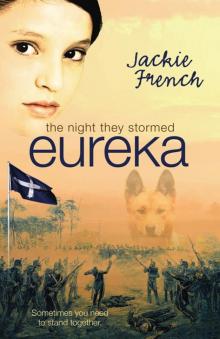 The Night They Stormed Eureka
The Night They Stormed Eureka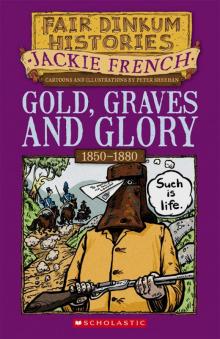 Gold graves and glory
Gold graves and glory If Blood Should Stain the Wattle
If Blood Should Stain the Wattle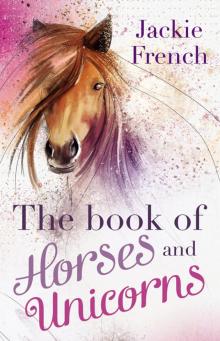 The Book of Horses and Unicorns
The Book of Horses and Unicorns Ophelia
Ophelia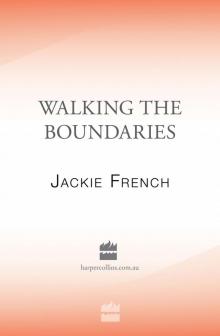 Walking the Boundaries
Walking the Boundaries Hitler's Daughter
Hitler's Daughter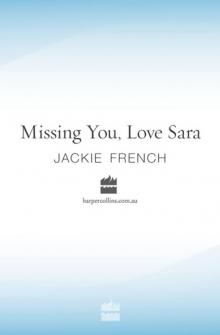 Missing You, Love Sara
Missing You, Love Sara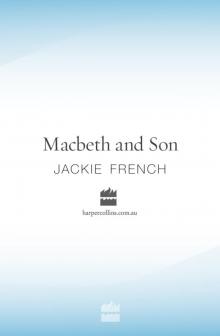 Macbeth and Son
Macbeth and Son Wonderfully Wacky Families
Wonderfully Wacky Families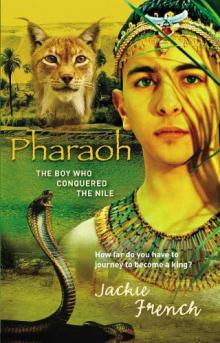 Pharaoh
Pharaoh Dance of the Deadly Dinosaurs
Dance of the Deadly Dinosaurs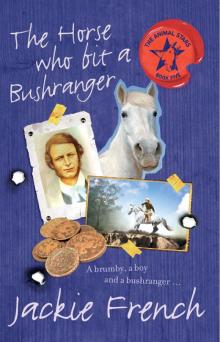 The Horse Who Bit a Bushranger
The Horse Who Bit a Bushranger One Big Wacky Family
One Big Wacky Family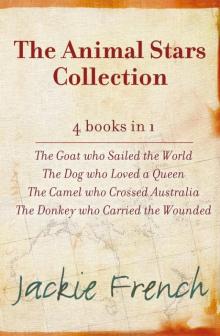 The Animal Stars Collection
The Animal Stars Collection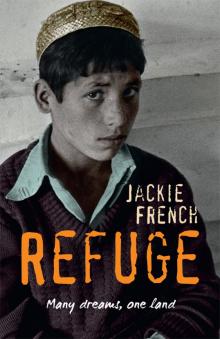 Refuge
Refuge Third Witch
Third Witch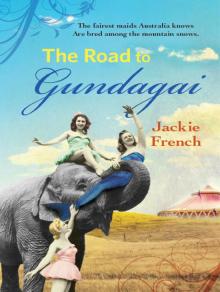 Down the Road to Gundagai
Down the Road to Gundagai